Want a Bigger House? 7 Clever Ways Designers Fake More Space
You can totally make a small room feel bigger (without tearing down walls).

CHRISTOPHER TESTANI
Even if you don’t technically live in a tiny home, sometimes it can feel that way. It just never feels like there’s enough space for the amount of stuff we tend to acquire over time, or maybe you genuinely don’t have enough real estate to work with! When the designers of this year’s Real Simple Home took over the New York City apartment, they were definitely limited by the square footage, so they put on their (very trendy) thinking caps and came up with some pretty ingenious ideas to maximize and optimize these tight quarters. Below, you’ll find a broad range of easy-to-copy ideas for how to make a small room feel bigger (no demo required).
Related: Take a 360 Virtual Tour of the 2023 Real Simple Home
Use an Oval Table
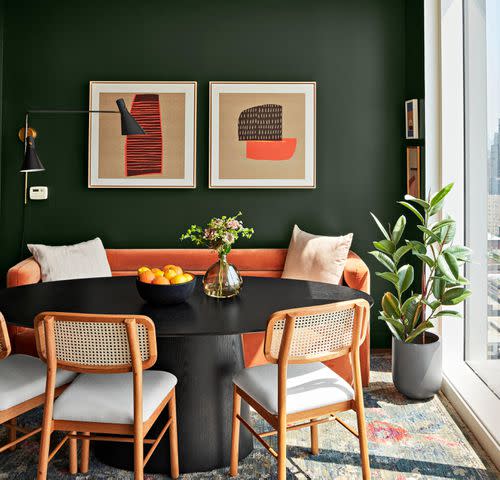
CHRISTOPHER TESTANI
A petite dining nook flows best when a round or oval table anchors the space. In this gorgeous seating area designed by Kim and Scott Vargo of Yellow Brick Home, the design duo opted for a curved table to help with flow. (Have you ever banged into a table corner when you’re trying to slide into a booth? Not fun!) Additionally, the chunky base really grounds things; it’s a counter-intuitive approach since a traditional table might seem like a better idea to open up the space. “The base provides some visual heft that wouldn’t be possible with a four-legged table,” the couple says. And see that beautiful rust-colored sofa peeking out from behind the table? Kim and Scott explained this design choice, saying it “allowed the table to be oriented lengthwise and still offer comfortable seating for at least six people.”
Shop Every Room in the Real Simple Home
Opt for Armless Chairs
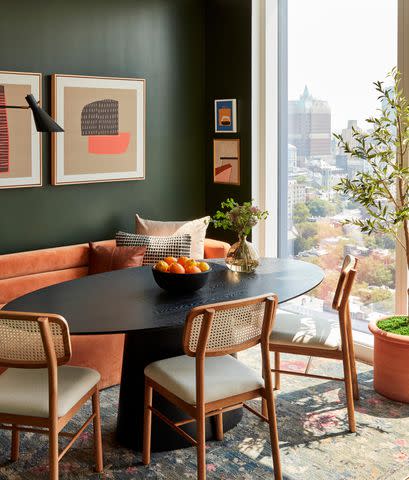
Christopher Testani
Another smart tip we couldn’t skip from this eating area? Armless chairs let you squeeze in more people around a table! Plus, Kim and Scott say, “Armless chairs allow the seats to tuck more completely under the table when not in use. This offers a more open feel and a little more flexibility with placement as well.”
Install Sconces to Fill Vertical Space
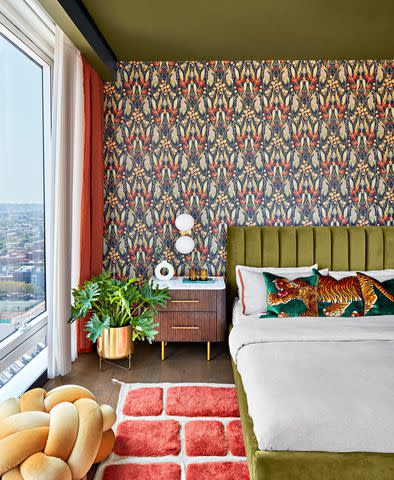
CHRISTOPHER TESTANI
Sconces are a brilliant strategy if you’re unwilling to sacrifice even an inch of floor space or work surface to lighting. David Quarles IV cleverly chose to hang sconces over nightstands in the primary bedroom he designed, which completely frees up the surfaces of the nightstands so they can hold more evening essentials. David imagined a client “coming home from a long day of work to relax in their oasis of a bedroom. As part of their wind-down routine, they read and enjoy a beverage right before sleeping, and once they're finished, they have more than enough space to place their accouterments without cluttering their nightstands.” He opted for this particular globe sconce because according to him, “it casts such a beautiful glow in any space. What better way to continue the romantic flutter of the city lights below than with ambient lighting that reflects that same warmth.” (Psst, you might have noticed this done in the aforementioned dining nook too! A sleek black swing arm sconce hangs over the table.)
Bring Shelves up to the Ceiling
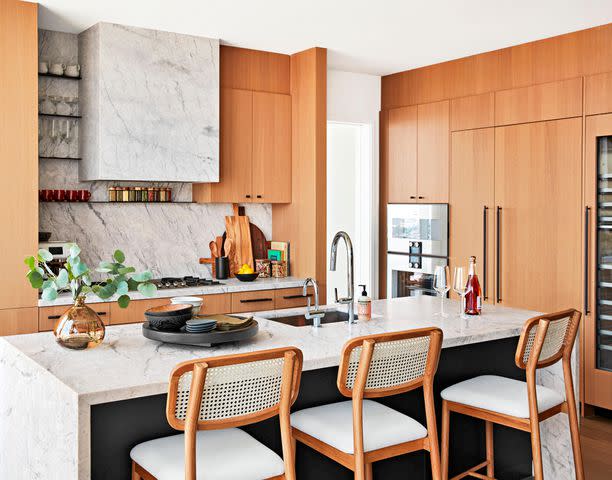
CHRISTOPHER TESTANI
If you have the wall space, why not install shelves that go all the way up to the ceiling? In this kitchen styled by the Vargos of Yellow Brick Home, you can see how slim ledges are wedged between the oven hood and wood cabinet to make use of the awkward backsplash space. Instead of just one or two shelves, they continue high up, offering even more storage. Place things you won’t need to reach for as often at the tippy top.
Hang Wall Hooks
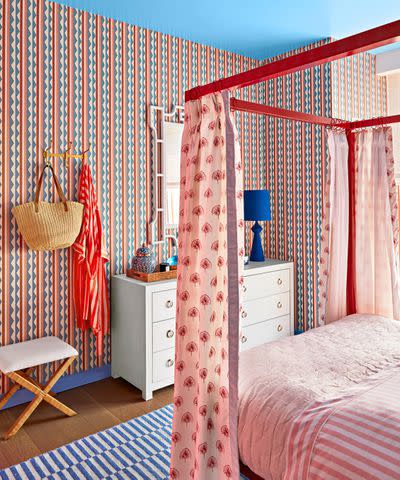
CHRISTOPHER TESTANI
Megan Hopp really thought hard about potential visitors in this guest bedroom she designed. To prevent the room from feeling too full with the canopy bed and dresser, she took advantage of the limited wall space and drilled in some hooks. Now company can hang bags, jackets, robes, etc., without cluttering the floor or other surfaces.
Place a Freestanding Shelf on a Work Surface

CHRISTOPHER TESTANI
What if you can’t drill into a wall, though? This is precisely the conundrum Linda Hayslett found herself in when she designed the roof deck. The building exterior could not be altered in any way, so she devised another plan for accessible storage in the outdoor space. She asked Architectural Grille, a metalwork manufacturer, to design custom, free-standing aluminum shelves she could place over the cookspace. Because they’re powder-coated, they can withstand the elements. The pretty, spotted panels on the ends are more than just an aesthetic choice—Linda requested these to add more weight to the structure to prevent tipping during blustery days.
Related: Furniture Arranging Mistakes to Avoid for a More Cohesive Space
Make Poufs Your Friends
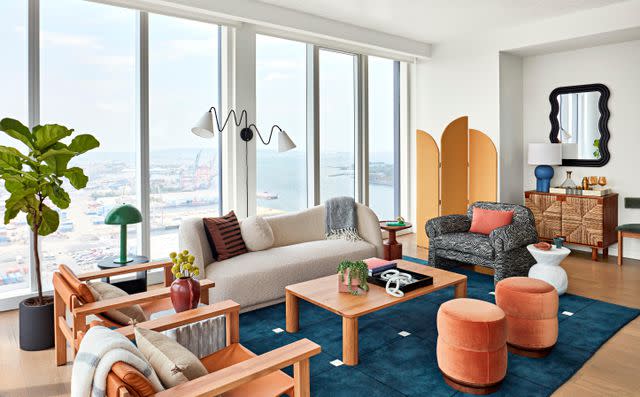
CHRISTOPHER TESTANI
Poufs, ottomans, stools—whatever you call them, get a bunch of them! Bobby Berk popped two of them into his living room design plan, placing them across from the sofa. He says, “The pair works nicely to balance the weight of the sofa and provide some really flexible seating. I like to bring in ottomans to most of my living room designs because they are just so functional—and great for extra seating in super small spaces.”
Related: Meet the Designers of the 2023 REAL SIMPLE Home
For more Real Simple news, make sure to sign up for our newsletter!
Read the original article on Real Simple.

